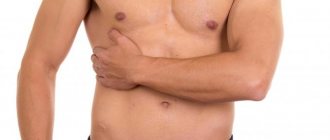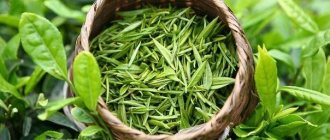One of the traditional signs of the approach of August in Moscow is the appearance throughout the city of large green cages in which the striped favorites of Muscovites and all Russians - watermelons - are languishing, awaiting their fate. Even the residents of the capital, spoiled by overseas fruits, are looking forward to the end of summer so that the whole family can enjoy the aromatic and juicy giant of about 10-12 kilograms. But the most impatient ones, instead of seventh heaven of bliss, risk spending a certain number of nights on the potty, or even ending up in a hospital bed.
The most popular watermelons in Russia are, of course, Astrakhan ones. This is a unique brand, a guarantee of taste and quality. Merchants know this very well and often unscrupulously take advantage of the gullibility of inexperienced buyers. How do residents of large cities in central Russia know that watermelons grow not only in Astrakhan, but also in Volgograd, in the North Caucasus, in the south of Ukraine and Moldova, in the republics of Transcaucasia and Central Asia. The price tag says “Astrakhan watermelons” - that means it is so.
However, nature is used to doing everything on time, and if watermelons are supposed to ripen by mid-to-late August, then it will be so. A reasonable question may arise: where do these delicious berries come from in our cities (and this is what the watermelon fruit is called from a botanical point of view) at the end of July?
After all, in Astrakhan, trial harvesting of watermelons takes place in early August, selective harvesting in the middle of the month, and mass harvesting begins on the 25th, so the native striped “Astrakhanites” should appear in Moscow only by September.
Option one: early ripening varieties from other watermelon-bearing regions of Russia and neighboring countries, but this option is unlikely because they have not yet entered into widespread practice, in addition, even for them, according to the All-Russian Research Institute of Irrigated Vegetable and Melon Growing (VNIIOB), located in Astrakhan region, 53-55 days with a temperature of 25-30.C are required. It does not pose any threat to health, only benefits, but more on that below.
Option two: mid-season varieties (traditional Astrakhan watermelon), boosted by nitrogen fertilizers and, above all, ammonium nitrate. This option is more common and is absolutely not indifferent to health. Let's look at it in more detail.
Nitrates
Nitrates act on watermelons like anabolic steroids on bodybuilders: growth proceeds at an accelerated pace and impressive weight and volume of the fruit is gained very quickly. Everything would be fine, but the nitrates categorically refuse to leave the watermelon and safely move into the bodies of those who enjoy early watermelon.
This is where the fun begins. In Russia, it is customary to eat a multi-kilogram minke whale in one sitting, with the whole family, so acute nitrate poisoning is by no means uncommon at this time of year. It is especially difficult in children, since nitrates compete with oxygen for our hemoglobin, and, it must be said, they compete successfully. And instead of being an oxygen carrier, hemoglobin (in the form of methemoglobin) becomes the cause of serious problems with cellular respiration.
Nitrates have another bad feature - they accumulate in the body, causing chronic intoxication. Doctors call this the “cumulative effect.” Children overloaded with nitrates grow worse, get sick more often, adults become irritable, sleep worse.
The most interesting thing is that it is almost impossible to distinguish a “pumped up” watermelon from a normal one by eye. Special measuring instruments that determine the nitrate content in fruits and vegetables, similar to the portable “Marion”, can help.
Symptoms
Watermelon, containing a large amount of nitrates, in addition to diarrhea itself, also provokes:
- nausea and profuse vomiting;
- pain in the abdominal area - from moderately dull to cutting;
- tachycardia;
- shortness of breath.
More serious poisonings are often accompanied by diarrhea and the release of blood in feces. Yellowing of the skin and eyes indicates liver dysfunction. If bacteria are the culprit of the problem, then the list of symptoms will be approximately the same, but temperature will be added to it.
Microbes
The next danger that may lurk in a watermelon, as well as on its surface, is microbes. The fruit ripens on the ground, then is transported and stored - and all this is far from being under sterile conditions. If a watermelon cracks during loading and unloading, then the flowing juice not only attracts known carriers of various types of infection - flies - but also becomes an excellent breeding ground for a wide range of microorganisms that love the human body, but with a rather strange love, causing acute intestinal infections.
A common seller’s trick is to prove the ripeness of a watermelon by cutting out a small pyramid from it, showing it to the buyer and inserting it back into the watermelon (selling “by cut”), which also does not bode well. Firstly, it is unknown what was cut with that same knife and whether it was ever washed. And secondly, even if there were no toilet fever pathogens inside the watermelon, now with a high degree of probability it can be said that they appeared there.
And an absolutely brutal way to sell watermelon (from the point of view of the stomach of a potential consumer) is to sell it in slices. You can add up all the above disadvantages and square them, or even cube them. All that remains is to eat such a dessert right away at the market - and you can go to the hospital.
What causes diarrhea
There are several reasons that cause diarrhea in an adult or child after eating watermelon. The problem is that the berry quite actively accumulates nitrates in its pulp, which enter the soil along with the applied fertilizer. Most often, problems occur with fruits supplied to the market at the very beginning of summer or out of season.
Derivatives of nitrogenous fertilizers, when they enter the human stomach, cause poisoning, which is manifested by diarrhea. How else are they dangerous? The thing is that, once in the digestive system, they are converted into nitrites, and these poisons are considered powerful carcinogens. In addition, they have a suppressive effect on the blood’s ability to transport essential substances and oxygen in particular. Because of this, a poisoned person often develops hypoxia.
“Overfed” watermelons are most dangerous for children - the severity of food poisoning in them, due to the underdevelopment of the immune system, is significantly higher than in adults.
In addition, if melons are stored incorrectly or for too long, then pathogenic microflora gets inside through subtle damage. The pulp contains a large amount of carbohydrates, which are an ideal environment for the rapid proliferation of microorganisms. Once in the human digestive system, bacteria provoke acute inflammation, the first sign of which is diarrhea.
The most dangerous thing is not to buy a whole watermelon, but a cut part. Here the problem is aggravated by sellers’ failure to comply with basic sanitary and hygienic standards. Often a dirty knife is used and everything is done with unwashed hands. In addition, many consumers do not bother to at least rinse the fruit before serving.
Dietary diuretic
And now we need to say a few words in defense of a normal, ripe and healthy watermelon. This is truly a unique creation of nature. It is difficult to find something similar among the numerous fruits and vegetables.
Watermelon is a dietary product. In the sense that there are practically no contraindications for eating watermelon. Watermelon consists of water (up to 80 percent of the fruit's weight), fructose, a small amount of glucose, sucrose, trace elements and plant fiber. Fructose is unique in that it is absorbed by the body without the need for insulin at all. This means that even patients with insulin-dependent diabetes can eat sweet watermelon.
The striped delicacy also has a pronounced diuretic effect, literally washing the body from the inside, which makes it possible to recommend the aromatic pulp to those suffering from diseases of the heart, blood vessels and joints. Watermelon is also useful for heart patients for a reason that we will talk about in the next section.
Signs of watermelon poisoning
Typically, symptoms of watermelon poisoning develop within 2 to 6 hours after eating it. There are several signs:
- nausea, vomiting;
- loose stools up to 15 times a day;
- weakness, sweating;
- dizziness, abdominal pain;
- high body temperature.
The severity of symptoms may vary depending on the volume of berries eaten, the initial state of health, and age.
Microelements warehouse
Watermelon is a real treasure trove of magnesium, which a person simply cannot do without. Chronic lack of magnesium in food leads to increased blood pressure. Magnesium and its partner calcium work to constrict and dilate blood vessels, a mechanism that keeps blood pressure stable in the body.
Magnesium is important for bile secretion and the deactivation of cholesterol, for binding oxalic acid salts (oxalates) and preventing the formation of kidney stones, for reducing nervous excitability, relieving muscle spasms, and normalizing intestinal motility.
And 100 grams of watermelon pulp contains as much as 224 milligrams of this wonderful microelement - only almonds contain more. Thus, to meet a person’s daily need for magnesium, it is enough to eat 150 grams of watermelon.
Watermelon is rich in potassium, although it is less than in dried apricots, bananas and persimmons, but if you compare the calorie content of the same bananas and watermelon, then the “Russian” who grew up on melons is clearly in a more advantageous position - there are three times more calories in a banana.
How to choose a watermelon
So, it’s decided, let’s buy a watermelon! What should you pay attention to in order not to contribute to an increase in sales of antidiarrheal (in other words, antidiarrheal) drugs?
- First of all, take your time. It is best to buy real Astrakhan watermelons at the end of August or at the beginning of September, when the chance is quite high that the fruits could ripen completely on their own, without saltpeter and other tricks.
- Never buy watermelons near the roads, at the entrance to the city, from cars or in other impromptu trading places. This is an almost one hundred percent chance of running into low-quality products. Ask the seller for all the documents for the watermelons - including a certificate from the sanitary and epidemiological authorities; after all, you have the right to know what you are paying your money for.
- Do not ask the seller to choose a watermelon for you “at his discretion.” The seller’s task is to sell, and what he sells to you depends on his conscience, and, unfortunately, not all people have it.
- The watermelon should be without a matte coating - a clear reflection of the sun should appear on a clean watermelon. Carefully examine the fruit - if there is a small rotten place with a dot in the center, it means that saltpeter was injected into it with a syringe. Let the sellers themselves eat such delights. Do not take fruits with cracks, dents or other signs of violence on the watermelon face.
- The “tail,” that is, the stem of the watermelon, should be yellowish and dried, but not completely dried out, since this is the first sign of long-term storage and transportation. And if the tail is torn off, it means they are hiding something from you, put this watermelon aside.
- It is desirable that the watermelon has a small yellow spot (the so-called “patch” - this is the place where the watermelon came into contact with the ground) - this means it has ripened on its own. If the spot is large, it means the poor guy was cold, he didn’t have enough sun and warmth, the taste will be watery and the sweetness won’t be the same.
- The watermelon should buzz loudly when tapped - unripe ones have dense flesh, and sound travels through its thickness with difficulty. Squeeze the watermelon with your hands (just don’t overdo it!) – the ripe fruit will crackle.
- Choose a medium-sized fruit (optimally 5-7 kg), if you plan to enjoy watermelons in a large company - it is better to take several small watermelons than one striped monster weighing 20 kilograms.
- Never take watermelons “by the cut” or in slices; it’s easier to throw away a watermelon that turns out to be unripe at home than to suffer with your stomach from a seemingly ripe, but populated like a microbiological laboratory, “striped fish”.
- Do not eat watermelon immediately at the market or on the street. At home, wash it thoroughly, maybe even with soap, and rinse with boiled water. While washing, you can check the watermelon again for ripeness - a ripe fruit will float in the water, and a green one will sink. You need to cut the watermelon with a clean knife. By the way, a ripe fruit will “disperse” under the knife with a characteristic crack, and the seeds will be dark brown or even black (not white).
A properly selected and properly prepared watermelon will bring moments of joy and benefit you and your family. Be healthy and bon appetit!
Sources
- Owczarek W., Walecka I., Lesiak A., Czajkowski R., Reich A., Zerda I., Narbutt J. The use of biological drugs in psoriasis patients prior to pregnancy, during pregnancy and lactation: a review of current clinical guidelines . // Postepy Dermatol Alergol - 2022 - Vol37 - N6 - p.821-830; PMID:33603597
- Michielsens CAJ., van Muijen ME., Verhoef LM., van den Reek JMPA., de Jong EMGJ. Dose Tapering of Biologics in Patients with Psoriasis: A Scoping Review. // Drugs - 2022 - Vol81 - N3 - p.349-366; PMID:33453052
- Han G., Wu JJ., Del Rosso JQ. Use of Topical Tazarotene for the Treatment of Acne Vulgaris in Pregnancy: A Literature Review. // J Clin Aesthet Dermatol - 2022 - Vol13 - N9 - p.E59-E65; PMID:33133344
- Kaplan DL., Ung BL., Pelletier C., Udeze C., Khilfeh I., Tian M. Switch Rates and Total Cost of Care Associated with Apremilast and Biologic Therapies in Biologic-Naive Patients with Plaque Psoriasis. // Clinicoecon Outcomes Res - 2022 - Vol12 - NNULL - p.369-377; PMID:32765022
- Jin JQ., Ahlstrom JM., Sweeney NW., Liao W. Clinical Characteristics of 18 Patients with Psoriasis and Multiple Myeloma Identified Through Digital Health Crowdsourcing. // Dermatol Ther (Heidelb) - 2022 - Vol10 - N4 - p.815-827; PMID:32638223
- Di Caprio R., Caiazzo G., Cacciapuoti S., Fabbrocini G., Scala E., Balato A. Safety concerns with current treatments for psoriasis in the elderly. // Expert Opin Drug Saf - 2022 - Vol19 - N4 - p.523-531; PMID:32056449
- Miki H., Han KH., Scott D., Croft M., Kang YJ. 4-1BBL Regulates the Polarization of Macrophages, and Inhibition of 4-1BBL Signaling Alleviates Imiquimod-Induced Psoriasis. // J Immunol - 2022 - Vol204 - N7 - p.1892-1903; PMID:32041783
- Wcisło-Dziadecka D., Kaźmierczak A., Grabarek B., Zbiciak-Nylec M., Brzezińska-Wcisło L. Are new variants of psoriasis therapy (IL-17 inhibitors) safe? // Int J Dermatol - 2022 - Vol58 - N12 - p.1360-1365; PMID:31192456
- Wu JJ., Pelletier C., Ung B., Tian M. Real-world treatment patterns and healthcare costs among biological-naive patients initiating apremilast or biologicals for the treatment of psoriasis. // J Med Econ - 2022 - Vol22 - N4 - p.365-371; PMID:30652520
- Sorokin AV., Kotani K., Elnabawi YA., Dey AK., Sajja AP., Yamada S., Ueda M., Harrington CL., Baumer Y., Rodante JA., Gelfand JM., Chen MY., Joshi AA ., Playford MP., Remaley AT., Mehta NN. Association Between Oxidation-Modified Lipoproteins and Coronary Plaque in Psoriasis. // Circ Res - 2022 - Vol123 - N11 - p.1244-1254; PMID:30571459










